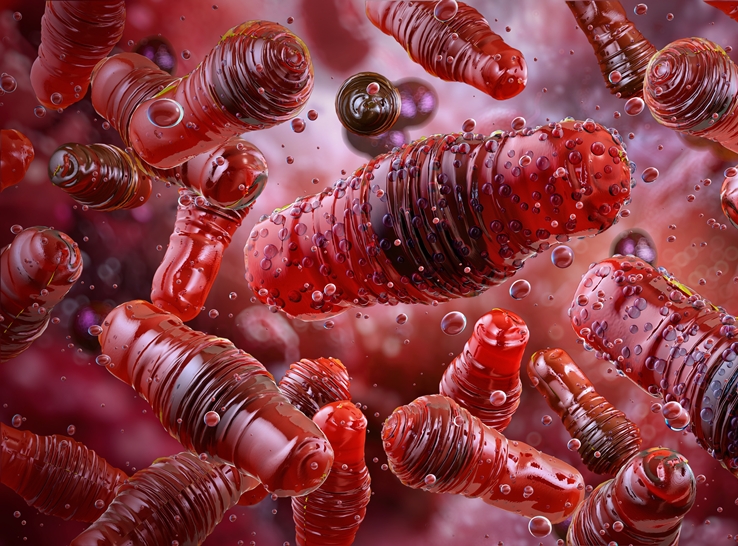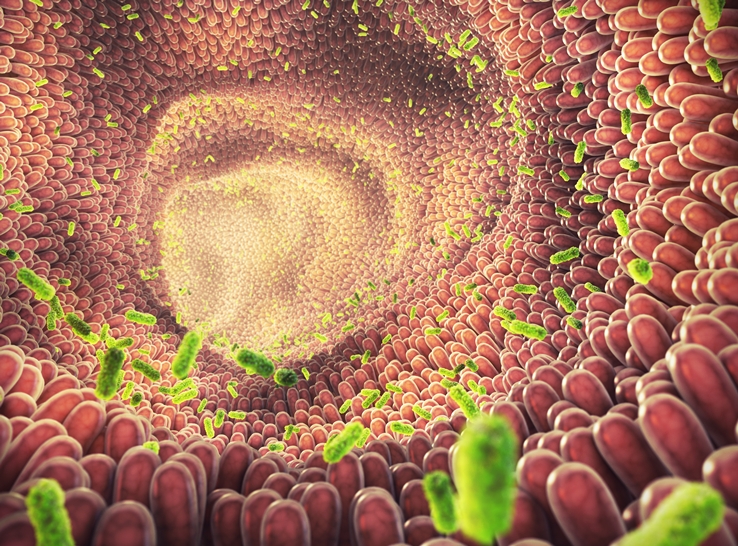First in a two-part series
When it comes to drinking water for poultry, Susan Watkins, PhD, has a lot to say. Most important: Don’t neglect it. “Water is the No. 1 nutrient input in poultry, and we give it second billing,” she lamented. “Keep water systems clean.”
“We have literally found everything in water supplies as far as pathogens: Vibrio cholerae, Bordetella, Pseudomonas, Escherichia coli, Campylobacter, avian influenza, Salmonella, staph, strep…nothing surprises me,” Watkins reported. “One time, we even found free-living round worms in a water line.”
At the Devenish Symposium held during the 2025 PEAK conference, Watkins, a consultant and distinguished professor emeritus at the University of Arkansas, offered practical advice for keeping poultry water clean.
Big water challenges
“After 30 years of experience, I’m here to tell you that microbial challenges are the ones that bring us to our knees,” Watkins said. “We’ve seen operations that used a lot of antibiotics in their water systems for years. Mold and yeast levels are through the roof, creating a round of challenges for birds.
“The next thing that brings us to our knees is not taking care of the mineral challenges and what that does to equipment,” she added.
Watkins recommends implementing a water assessment program for regular checks on water quality. An assessment program also helps producers know how to respond to unexpected problems.
Six water assessment tips
Watkins discussed her top six items for a thorough water assessment.
1. Conduct regular well inspections
“We’ve had horrific flooding in a lot of the US, so it is really important to take a minute and think about your wells and protect them,” Watkins said. “If flooding has occurred near the well, that’s a big red flag.
“Inspect the well head for problems. Make sure there’s no cracking or corrosion, broken or missing well caps, or settling or cracking in the surface seal.”
If problems are discovered, take a water sample to test for contamination. “If we see a lot of bacteria, a shock chlorination may be needed on the well between flocks,” she explained. “We’ve seen E. coli challenges in areas that were flooded. Shock chlorination will get the water system back to ground zero for bacteria.”
Shock chlorination introduces very high levels of chlorine into a well, but do not run the high levels through the drinking water systems, which could be damaging to the equipment.
Otherwise, Watkins recommends testing wells annually for bacteria and minerals.
“Keep accurate records on your wells, and have the wells protected and locked,” she added. “A well is more valuable than you think.”
She recalled a situation in which a producer suspected a disgruntled neighbor of pouring gasoline down the farm well. The farm struggled to recover from the contamination. A lock would have prevented the incident.
2. Check water filters
Periodically inspect water filters for sediment. “Water flow is reduced 40% to 60% every time we allow sediment to build up on barn filters,” Watkins said. “Plus, the filter becomes a bacteria breeding ground. It is just like heaven for Pseudomonas.
“If we use products with vitamins and electrolytes, we really create the perfect storm for things growing in our water supply,” she added. “So, stay on top of it.”
Barn filters that clog more than once or twice a week need an additional filtration system to be installed farther upstream to handle the load.
3. Monitor injector, water flow
“A question that still pops up at times is if the injector is really doing what it’s supposed to do, which is to precisely inject a product,” Watkins said. “It’s important to know that, and it is amazing how often injectors are a little off.
“Make sure the technology connecting those injectors to the water supply is not creating restriction points,” she continued. “If it is, then your birds at peak demand may not be getting what they need.”
To check water flow and injector accuracy, Watkins suggests using an inexpensive, digital water reader like RainWave.
Another concern is that injectors don’t always blend the product in the water. Newer, sophisticated injection technologies will drop the product into the water and let it flow. But Watkins doesn’t think it blends well. The “old-school” Dosatron system blends the product better, she added.
When multiple injectors are used on a water line, ensure they are not competing with each other. For example, if an injector adding chlorine sits next to an injector adding acid, the chlorine will hit the acid and the chlorine will gas off. She recommends creating a mixing chamber to uniformly blend the first product before adding the next one.
4. Review vaccine windows
“How long is a vaccination procedure?” Watkins asked. “I don’t want to pick on veterinarians, but sometimes we get vaccine procedures that are overly long and involved, allowing disease challenges to occur on top of a vaccine reaction.
“I think vaccine windows should be tightened up when adding products to the water so it is done quickly, and we can put those birds to bed on good, clean water,” she continued.
“We may need to work with vaccine suppliers to tighten that window. But I think tighter windows would be huge for the industry, especially in this era of minimizing antibiotic usage.”
5. Implement annual water tests
Watkins recommends annual water tests for pH and mineral content. “Test the source and then test post-treatment if you are doing filtration and sanitation,” she said. “And I recommend testing as needed if other problems show up.
“For example, a hatchery was concerned for some time that their vaccines weren’t working,” she related. “So, the vaccine supplier asked for a water test conducted after the reverse osmosis (RO) system. Guess what? The test showed the RO system had failed and allowed vaccine-sensitive minerals to come through the system.”
Other water tests she recommends include microbials and total bacteria. If antibiotics are used, then also test for yeast and mold.
“In this new era, in which we’re not as critically worried about testing the efficacy of antibiotics, we need to be worried about the efficacy of our disinfectants,” Watkins added. “Do we have the right disinfectant for our water supply? An efficacy test can tell us that.”
6. Test full mineral profile
Watkins is clear that a test for minerals should include the full profile: sodium, chloride, iron, manganese, calcium, magnesium, hardness, bicarbonates, nitrates, nitrites, sulfur, sulfates and silicon. For flocks staying on the farm for a long time, include tests for lead, arsenic and copper.
“Birds are fairly tolerant of iron, manganese and sulfate, but our equipment is not,” she said. “If water flow is restricted because minerals build up, the farm will never get off the bottom on their production.”
Watkins saw this happen to a grower. She was called to the farm because it had struggled with low production for years. “We opened one of the barn filters and saw a gray film on the filters,” she related. “It was sulfate and had to be cleaned up.
“The grower then installed a central filtration system, and he’s been one of the company’s best producers for the last couple of years.”
Monitor bacteria counts
Water should be monitored for total bacteria, according to Watkins. It also needs testing at the source and again at the drinkers to determine how much birds consume.
She recalled the case of a farm with community-supplied water but at a remote location where backflow prevention wasn’t required. “If you get any drop in pressure, it’s back siphoning and contaminating the water, and then it gets worse,” Watkins said.
Testing at the water source for the farm measured 200,000 colony-forming units (CFU) of bacteria which, left untreated, turned into an astounding 4.7 million CFU of bacteria per milliliter at the drinker.
“That many bacteria create a big challenge for chicks to overcome and give their best performance,” she said. “My advice is to get this system clean with good clean water. Then, if they need to dose something in it, do it early in the day and get the birds back on clean water at night to prevent microbial explosions when the systems stop flowing.”
Camera for inside look
If water tests aren’t enough, Watkins suggested purchasing an inexpensive two-way articulating borescope camera to visually inspect the pipes.
“This is a great little tool to get a lot of good information about the water system,” Watkins said. “I was on a farm where a service technician was using it to inspect the water system, which was horrific, and the flock reflected it. They were not doing well.”
The service technician downloaded photos from inside the system to a phone and showed them to the manager. “A camera doesn’t lie,” she added. “We can get a lot of good information from them.”
The industrial borescope includes a 0.33 inch articulated snake camera with 5 foot cording and video inspection scope with light. It is commonly used by aircraft mechanics.
In summary, Watkins highly recommends regular water assessments on poultry operations to stay on top of problems ranging from bacterial contamination and high mineral content to improperly set equipment and drawn-out protocols for vaccines.
Read Part 2, Water sanitation is the best insurance policy





